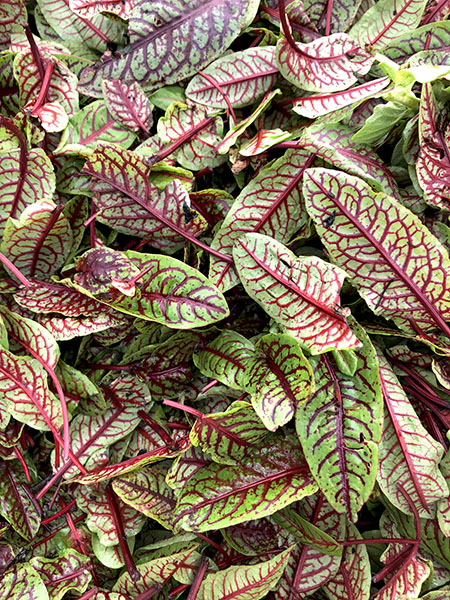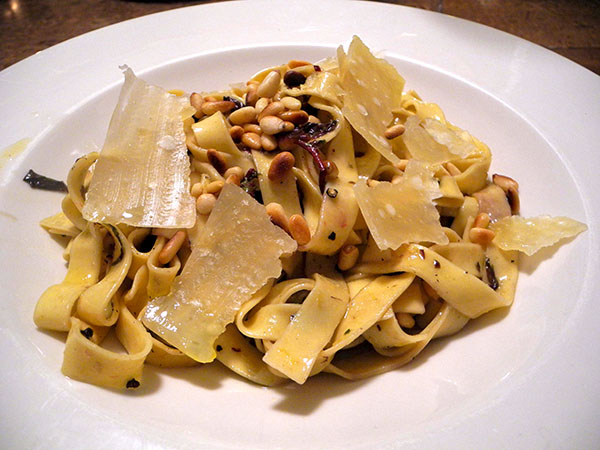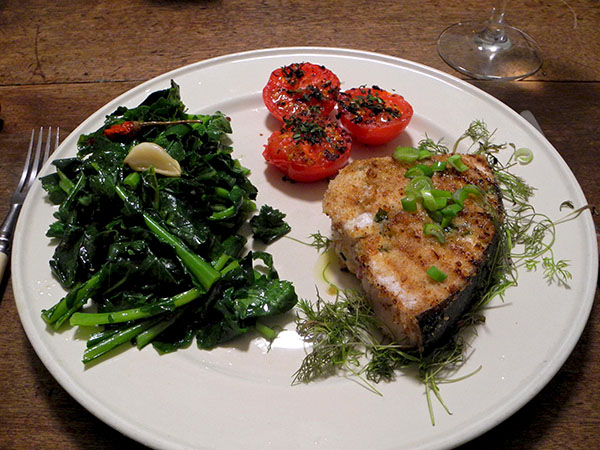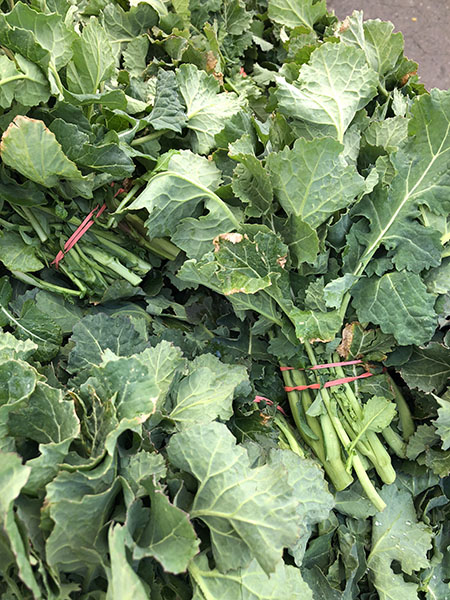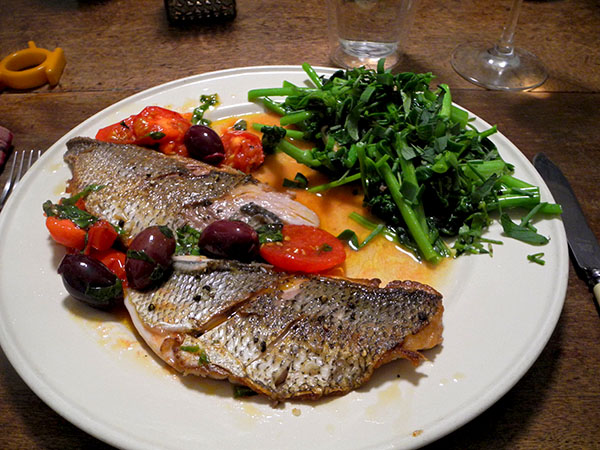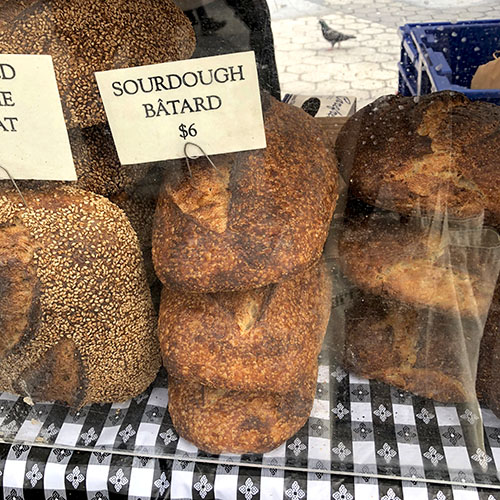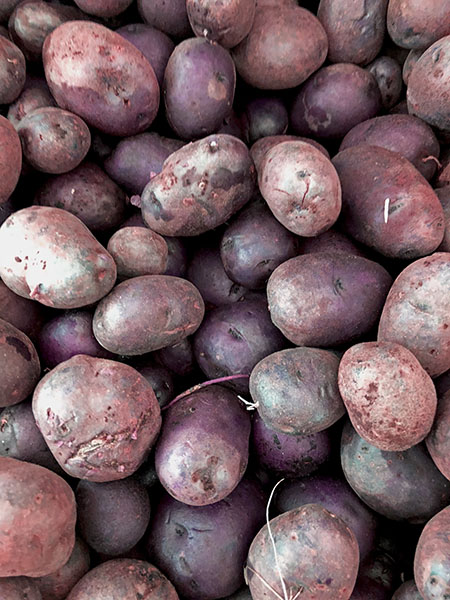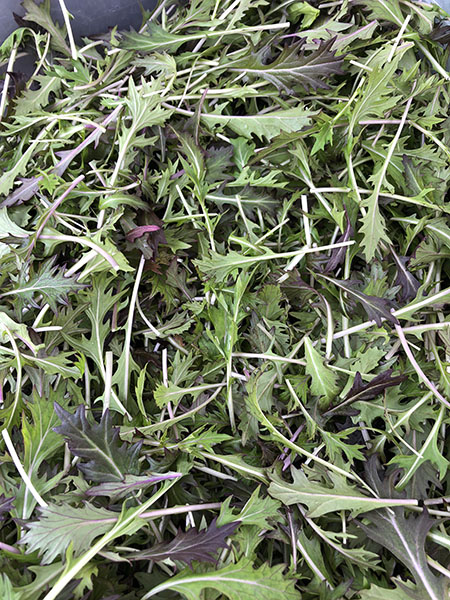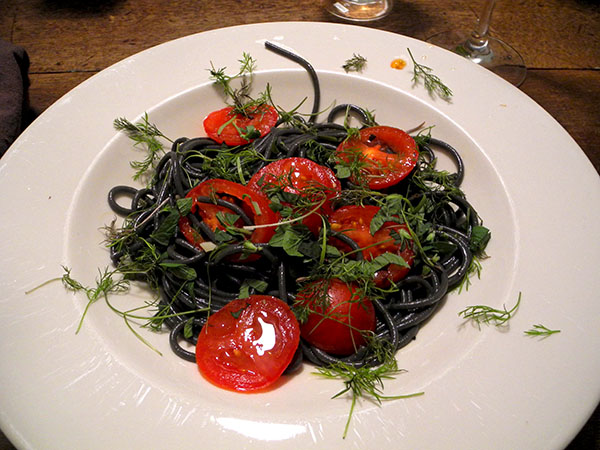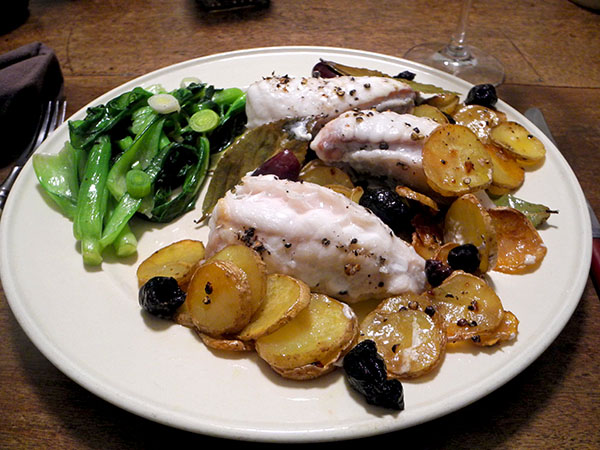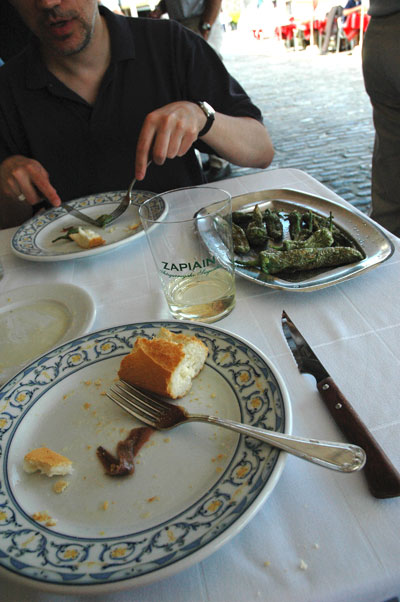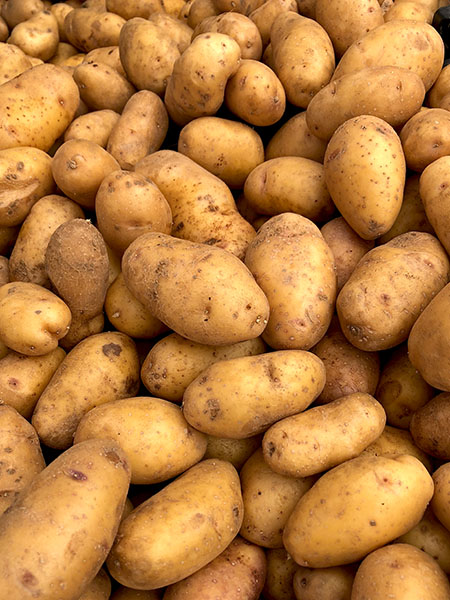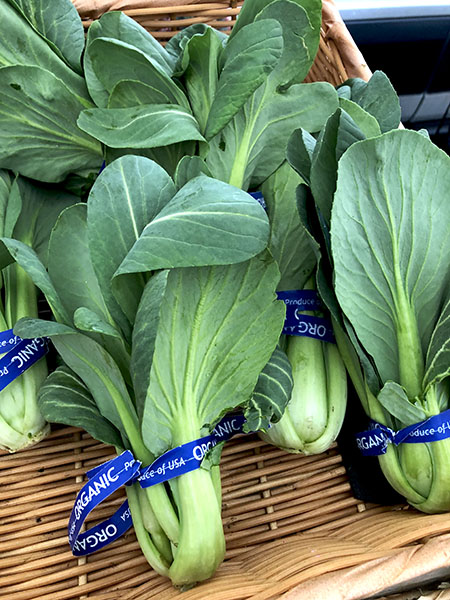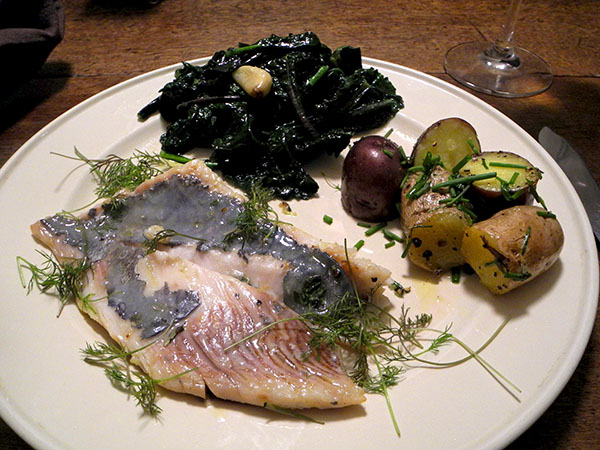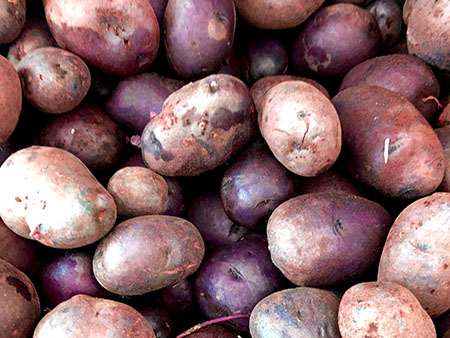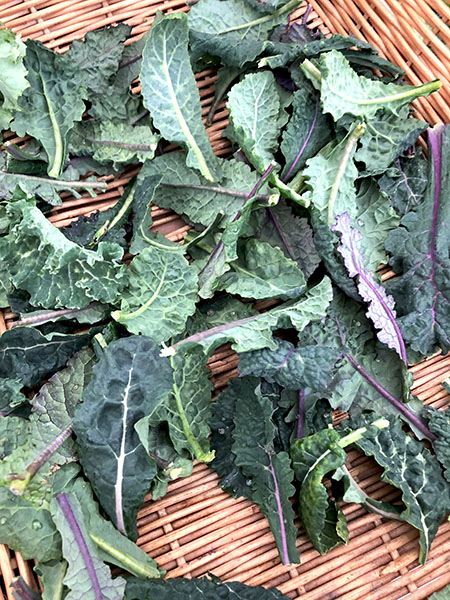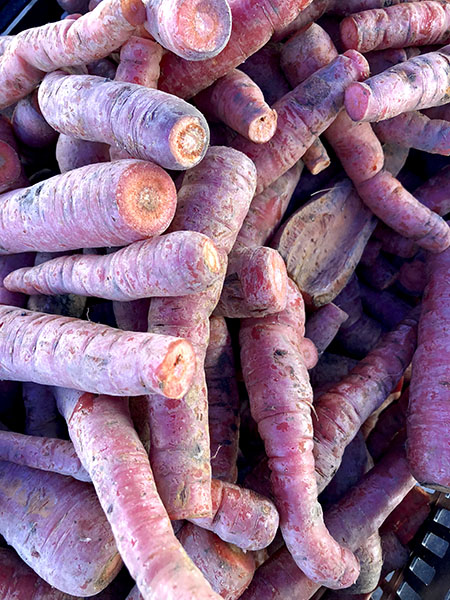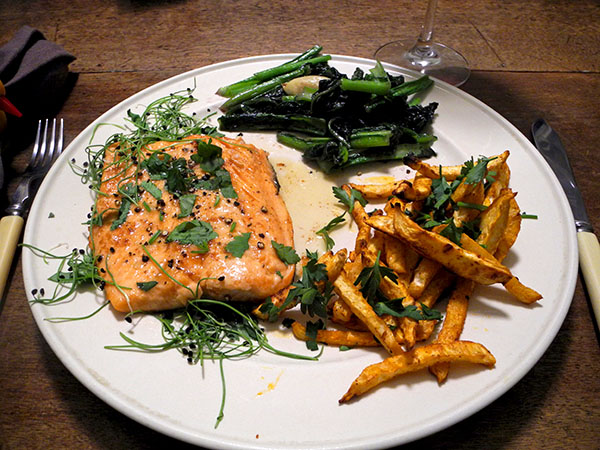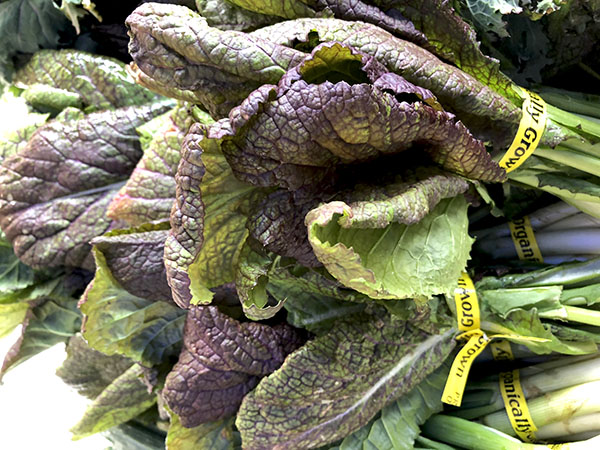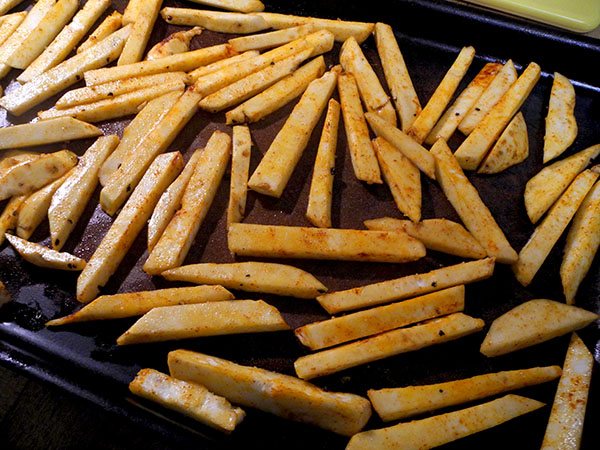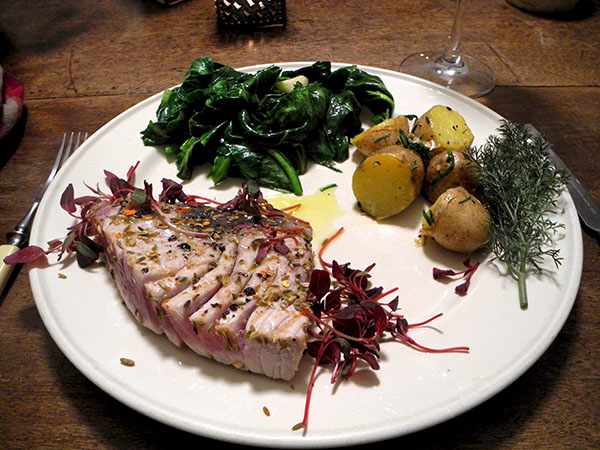
This meal followed something of a routine: Each of the 3 main elements was modeled on a preparation I’ve done many times before. Most of the details however were new.
I neglected to get a picture of the deeply-serious-looking bronze fennel while it was still at the market stall earlier in the day, but here’s a shot of the beautiful micro red amaranth that embellished the swordfish last night.
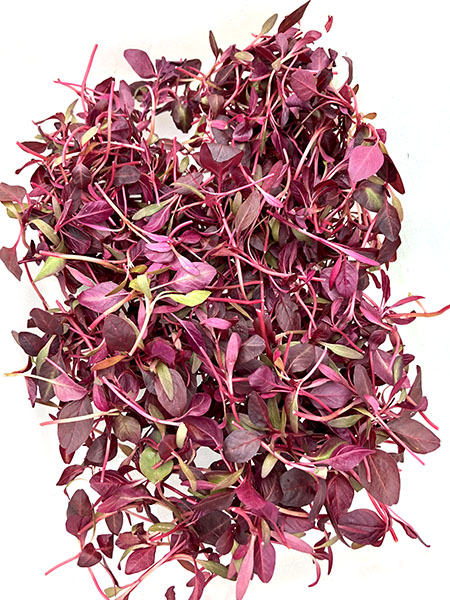
There’s a little more to that story: I had intended to accompany the potatoes with the amaranth and arrange the fennel fronds around the fish, but I inadvertently reversed that arrangement in my rush to dress the plates for the table. I’m not sure it really made any difference.
I did however capture the chives, which made it onto the potatoes even prior to the fennel, before I left the market.

- one 13-ounce yellowfin tuna steak off of Scott Rucky’s fishing vessel, ‘Dakota’, from Pura Vida Seafood, halved, seasoned with sea salt and freshly-ground black pepper and rubbed, tops and bottoms, with a mixture of dry Sicilian fennel seed from Buon Italia that had been crushed in a mortar and pestle with a little dried peperoncino Calabresi secchi, also from Buon Italia, pan-grilled above a brisk flame (for barely a minute on each side), finished on the plates with a good squeeze of the juice of an organic lemon from Whole Foods Market and some olive oil, served with micro red amaranth from Windfall Farms

- six Nicola potatoes from Mountain Sweet Berry Farm scrubbed and boiled, with their skins, inside a medium vintage Corning Pyrex Flameware blue-glass pot with a generous amount of salt until barely cooked through, drained, halved, dried while still inside the still-warm pot, tossed with a tablespoon or so of olive oil, sprinkled with sea salt, freshly-ground black pepper, and scissored chives from Lucky Dog Organic Farm, garnished with bronze fennel from Norwich Meadows Farm

- one bunch of collard greens from Norwich Meadows Farm, the larger leaves stemmed, cut as a rough chiffonade, then braised inside a heavy antique high-sided, tin-lined copper pot in which 3 small crushed Keith’s Farm Rocambole garlic cloves had been allowed to sweat with some olive oil, the dish finished with sea salt, freshly-ground black pepper, and a drizzle of olive oil
- the wine was a Portuguese (Dão) white, Quinta Dos Roques Encruzado 2015, from Garnet Wines
- the music was a streaming of the terrific sort-of-old album (I think I bought the LP in 1990), ‘Points of Departure‘, the Orpheus Chamber Orchestra performing works by Fred Lerdahl: ‘Waves’ (1988); Jacob Druckman: ‘Nor Spell Nor Charm’ (1990); WIlliam Bolcom: ‘Orphee-Serenade’ (1984); and Michael James Gandolfi: ‘Points of Departure’ (1988)

